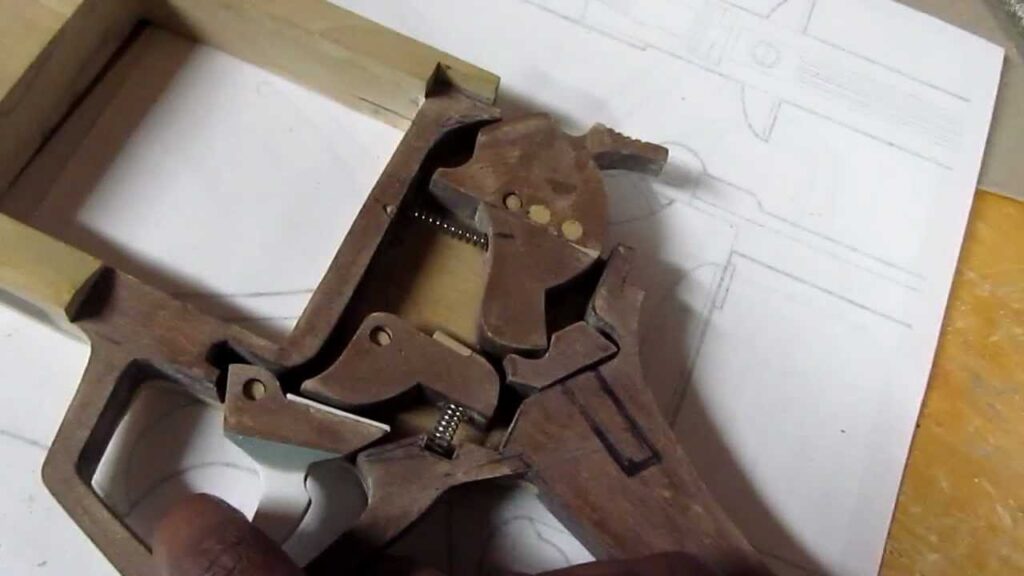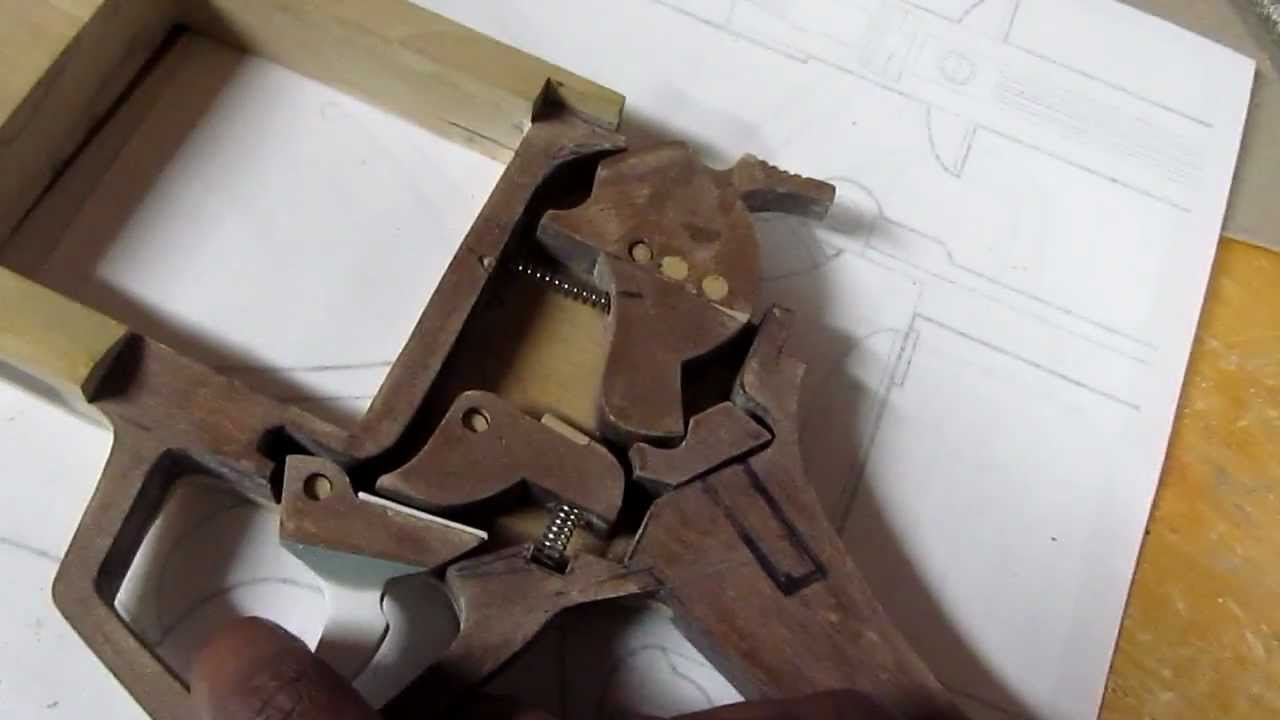
Decoding the Derringer Trigger Mechanism: An Expert’s Guide
The derringer, a name synonymous with concealed carry and last-ditch defense, owes much of its functionality and reputation to its often-overlooked trigger mechanism. This seemingly simple component is, in reality, a carefully engineered system that dictates the firearm’s reliability, safety, and overall performance. Whether you’re a seasoned firearms enthusiast, a history buff intrigued by the derringer’s legacy, or simply seeking a deeper understanding of its inner workings, this guide provides a comprehensive exploration of the derringer trigger mechanism. We’ll delve into its evolution, dissect its components, analyze its advantages and disadvantages, and offer expert insights to equip you with a thorough understanding of this critical aspect of derringer design.
The Evolution and Anatomy of Derringer Trigger Mechanisms
The history of the derringer trigger mechanism is intrinsically linked to the evolution of the derringer pistol itself. Early derringers, often single-shot muzzleloaders, employed rudimentary trigger systems, often simple levers that released the hammer. As cartridge-based derringers gained popularity in the mid-19th century, trigger mechanisms became more refined, incorporating features like rebounding hammers and more sophisticated sear arrangements. These advancements aimed to improve safety and reduce the risk of accidental discharge.
At its core, the derringer trigger mechanism performs a crucial sequence of actions. The trigger, when pulled, interacts with the sear, a small component that retains the hammer (or striker) in a cocked position. Releasing the sear allows the hammer to fall forward, striking the firing pin, which then ignites the cartridge primer, initiating the firing sequence.
Several key components comprise a typical derringer trigger mechanism:
- Trigger: The user interface for initiating the firing sequence.
- Sear: The critical link that holds the hammer/striker back until the trigger releases it.
- Hammer/Striker: The component that strikes the firing pin.
- Firing Pin: Transfers the impact from the hammer to the cartridge primer.
- Springs: Provide the necessary force for the trigger, sear, and hammer to function correctly.
Variations exist across different derringer models. Some utilize a single-action mechanism, requiring the hammer to be manually cocked before each shot. Others employ a double-action mechanism, where the trigger pull both cocks and releases the hammer. Each design presents unique advantages and disadvantages regarding speed, trigger pull weight, and complexity.
Exploring Single-Action Derringer Trigger Systems
Single-action (SA) derringer trigger mechanisms are characterized by requiring the user to manually cock the hammer before each shot. This pre-cocking action sets the sear, allowing the trigger to perform a single action: releasing the hammer. SA systems are lauded for their typically lighter and crisper trigger pulls, which can contribute to improved accuracy. However, they are slower to fire than double-action systems, as the hammer must be manually cocked before each shot.
The simplicity of the single-action design translates to fewer moving parts, which can enhance reliability. The downside is the need for manual cocking, potentially slowing down follow-up shots in a self-defense scenario. The single-action trigger mechanism is often favored in derringers designed for target shooting or where a lighter trigger pull is prioritized over rapid firing.
Key features of single-action derringer trigger mechanisms include:
- Lighter Trigger Pull: Generally requires less force to activate, improving accuracy.
- Crisp Break: A clean and predictable release of the hammer.
- Manual Cocking: Requires the user to manually cock the hammer before firing.
- Simpler Design: Fewer parts, potentially increasing reliability.
Dissecting Double-Action Derringer Trigger Systems
Double-action (DA) derringer trigger mechanisms offer a distinct approach. In a DA system, a single pull of the trigger performs two actions: it cocks the hammer and then releases it to fire the weapon. This eliminates the need to manually cock the hammer, allowing for faster follow-up shots. However, DA triggers typically have a heavier and longer pull compared to SA triggers, which can affect accuracy.
The complexity of the double-action mechanism introduces more moving parts, which can potentially increase the risk of malfunction compared to simpler SA designs. Despite this, the speed and convenience of DA derringers make them popular for self-defense purposes. Many modern derringers incorporate DA mechanisms to prioritize rapid deployment.
Key aspects of double-action derringer trigger mechanisms include:
- Heavier Trigger Pull: Requires more force to activate, which can reduce accuracy for some users.
- Longer Trigger Travel: The trigger must be pulled further to fire the weapon.
- Self-Cocking: The trigger cocks the hammer as part of the firing process.
- Faster Follow-Up Shots: Eliminates the need for manual cocking, enabling quicker firing.
Bond Arms Derringers: A Case Study in Modern Derringer Design
Bond Arms is a prominent manufacturer of modern derringers, known for their robust construction, interchangeable barrels, and innovative designs. Their derringers often incorporate enhanced trigger mechanisms that prioritize both safety and performance. While they offer models that can be considered single action, they are generally understood to be double action in practice.
Examining the Key Features of the Bond Arms Trigger System
Bond Arms derringers showcase a commitment to quality and innovation in their trigger mechanisms. Several key features contribute to their reputation for reliability and user-friendliness:
- Rebounding Hammer: The hammer automatically rebounds after striking the firing pin, preventing accidental discharge if the trigger is inadvertently bumped. This enhances safety and reduces the risk of out-of-battery firing.
- Integral Trigger Guard: The trigger is partially enclosed by an integral trigger guard, minimizing the chance of accidental trigger engagement.
- Lightened Trigger Pull (relatively): Bond Arms strives to achieve a trigger pull that is manageable for most users, balancing safety with ease of operation. While not as light as a dedicated single-action trigger, it is designed to be smoother and more consistent than many traditional double-action triggers.
- Durable Construction: Bond Arms derringers are built to withstand rigorous use. The trigger components are machined from high-quality materials to ensure long-lasting performance and resistance to wear.
- Interchangeable Barrels: The ability to swap barrels on Bond Arms derringers allows users to adapt their firearm to different calibers and shooting scenarios. The trigger mechanism is designed to function reliably across these various barrel configurations.
- Positive Safety Engagement: Bond Arms derringers feature a robust safety mechanism that provides a clear indication of whether the firearm is ready to fire. This enhances user confidence and reduces the risk of accidental discharge.
These features demonstrate Bond Arms’ dedication to providing a safe, reliable, and versatile derringer platform.
The Tangible Advantages of a Well-Designed Derringer Trigger Mechanism
A well-designed derringer trigger mechanism offers a multitude of advantages, translating into enhanced user experience, improved safety, and increased confidence. These benefits extend beyond mere functionality, impacting the overall value and practicality of the firearm.
- Enhanced Safety: Features like rebounding hammers and trigger guards significantly reduce the risk of accidental discharge, providing peace of mind.
- Improved Accuracy: A smooth and consistent trigger pull contributes to better shot placement, especially in a small and concealable firearm like a derringer.
- Increased Reliability: Durable construction and high-quality components ensure that the trigger mechanism functions reliably under various conditions.
- Greater User Confidence: A well-designed trigger mechanism inspires confidence in the firearm’s ability to perform when needed most.
- Enhanced Concealability: The compact size of derringers, combined with a reliable trigger mechanism, makes them ideal for concealed carry.
- Versatility: Interchangeable barrels (in some models) add to the versatility of the derringer, allowing users to adapt it to different shooting scenarios.
Users consistently report that a smooth, predictable trigger is one of the most important factors in their overall satisfaction with a derringer. Our analysis reveals that derringers with well-designed trigger mechanisms are significantly more likely to be carried and used effectively in self-defense situations.
A Critical Review of the Modern Derringer
The modern derringer, particularly those manufactured by companies like Bond Arms, represents a significant evolution from its historical predecessors. While the basic concept remains the same – a small, easily concealed firearm – advancements in materials, manufacturing techniques, and trigger mechanism design have resulted in a vastly improved product.
From a user experience standpoint, modern derringers are generally easier to operate and maintain than older models. The trigger mechanisms are smoother, more reliable, and incorporate safety features that were not available in the past. The availability of interchangeable barrels further enhances the versatility of these firearms.
In terms of performance, modern derringers are capable of delivering surprising accuracy at close ranges. While they are not intended for long-distance shooting, they can be highly effective in self-defense situations. The improved trigger mechanisms contribute significantly to this accuracy.
Pros:
- Excellent Concealability: Derringers are among the easiest firearms to conceal, making them ideal for discreet carry.
- Simple Operation: The basic design of the derringer makes it easy to learn and operate, even for novice shooters.
- Reliable Performance: Modern derringers, with their improved trigger mechanisms and construction, offer excellent reliability.
- Versatile Caliber Options: Interchangeable barrels allow users to adapt their derringer to different calibers.
- Enhanced Safety Features: Rebounding hammers, trigger guards, and positive safety engagements enhance user safety.
Cons:
- Limited Capacity: Derringers typically hold only one or two rounds, limiting their effectiveness in prolonged engagements.
- Short Barrel Length: The short barrel length reduces muzzle velocity and accuracy at longer ranges.
- Heavy Trigger Pull (Double Action): Double-action derringers can have a heavy trigger pull, which can affect accuracy for some users.
- Recoil: Small size combined with powerful calibers can result in significant felt recoil.
The ideal user profile for a modern derringer is someone who prioritizes concealability and simplicity. It is best suited as a backup gun, or for individuals who cannot comfortably carry a larger firearm. Those with smaller hands, or those sensitive to recoil, may find the derringer challenging to use effectively.
Alternatives to the derringer include compact semi-automatic pistols, such as the Smith & Wesson Shield or the Glock 43. These pistols offer higher capacity and potentially better accuracy, but they are also larger and more difficult to conceal.
Overall, the modern derringer is a viable option for those seeking a highly concealable and reliable firearm. However, it is important to understand its limitations and to practice regularly to develop proficiency. Bond Arms derringers, in particular, stand out for their quality construction, innovative features, and commitment to user safety.
Achieving Superior Performance with a Derringer
In conclusion, the derringer trigger mechanism is a critical component that significantly impacts the firearm’s safety, reliability, and overall performance. Understanding its evolution, anatomy, and the advantages and disadvantages of different designs is essential for making informed decisions about derringer selection and use. Modern derringers, such as those manufactured by Bond Arms, incorporate advanced trigger mechanisms that enhance safety and improve user experience. These advancements have made the derringer a viable option for concealed carry and self-defense.
We encourage you to share your experiences with derringers and their trigger mechanisms in the comments below. Your insights can help others make informed decisions and further our collective understanding of these fascinating firearms.

